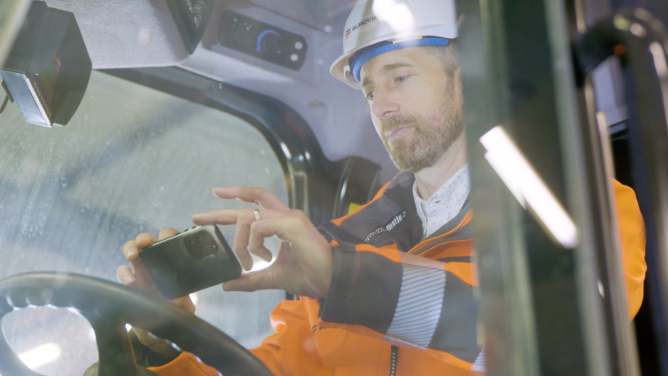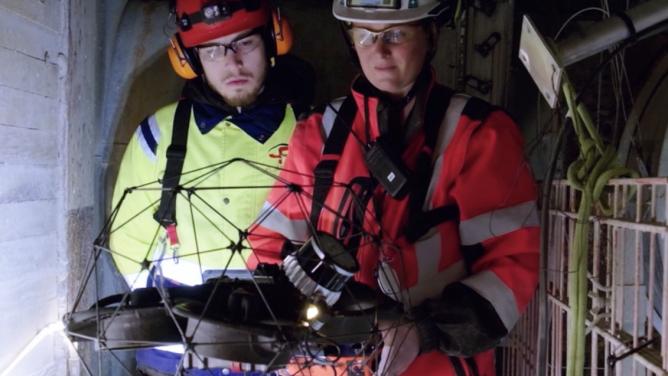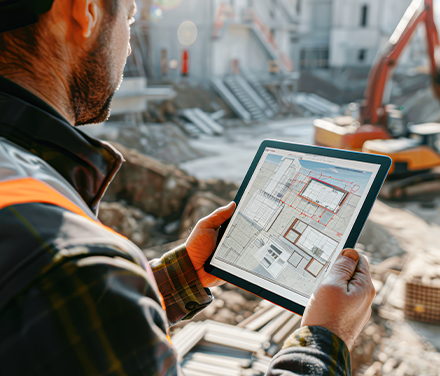Generative AI as a creative assistant?
With images created by ChatGPT, Midjourney and Adobe Firefly going viral, the creative dimension is undoubtedly the first that springs to mind when trying to imagine the impact of generative AI on the construction industry. In fact, some artists and architects have already taken advantage of technology to enhance creative exploration or generate images more quickly. As part of the Energies Légères exhibition at the Pavillon de l’Arsenal in Paris (France), the artist and architect Olivier Campagne presented “6 post-carbon landscapes” generated (in part) using AI. Others, like architect Stephen Coorlas, take a more exploratory approach and use AI as a way of challenging their usual practices and ways. Finally, some architectural firms, such as Zaha Hadid Architects, even claim to use generative AI as a source of inspiration in “most of their projects.”
(Really) Rapid prototyping
Apart from generative AI creative visions that make you feel like your eyes are playing tricks on you, its main contribution to the construction and infrastructure sectors undoubtedly lies in productivity. Generative AI can be used to accelerate prototyping and limit design errors. It’s a good thing considering that the latter represent between 6 to 8% of the total cost of a building, and that rework due to errors, quality or compliance can represent a 30% drop in profits for construction companies! With its platform dedicated to electrical system design, Augmenta showcases a certain number of benefits. Apart from being able to design faster, this automation platform could offer designs that are always compliant, while offering multiple alternative designs to keep only the best.
Streamlining the supply chain
Generative AI is also emerging as an essential tool for navigating the increasing complexity of supply chains. For example, it can be used to anticipate demand based on data history, market trends or economic data, making it possible to dynamically optimize deliveries or make it easier to choose suppliers by automatically cross-referencing cost factors or risk. In the future, it could even help promote supply chain decarbonization by introducing environmental data into training databases. By integrating Microsoft’s Dynamics 365 Copilot assistant into ERP or CRM platforms, Microsoft is acting as a pioneer. The Redmond-based giant has even teamed up with Dominos Pizza to optimize inventory management.
Fast-track tender bidding process
Generative AI could prove to have a more unexpected use when making bids to calls for tenders. For example, it can be used to extract important information from very lengthy documents, produce summaries or even propose estimates. In California, steel structure specialist ConXtech has taken things even further. The company has partnered with Autodesk to build a generative AI-based tender platform which can identify the most profitable design based on specified needs, suppliers and subcontractors. What better way to save time and money than by automating part of the bidding process.
Limitations of generative AI
While generative AI promises multiple gains in the construction industry, it also raises a certain number of questions. Undoubtedly, the most important being that of trust. Right now, it is difficult to guarantee the accuracy of the results formulated by AI, as such, human supervision remains essential. This is, for example, the case with error identification automation in BIM models (clash detection), whose accuracy depends on the quality of the input data and can produce unfortunate “oversights” on the part of the machine. When generative AI is used for more creative purposes, it also raises the question of copyright and intellectual property concerning the final product. Finally, the use of generative AI tools raises questions about confidentiality: calls for tender data introduced into LLMs could thus constitute a significant breach.
Time-saving, increased productivity, optimized design or creative partner, generative AI could extensively transform the way we build. In the meantime, it is gradually being introduced as a formidable tool for reducing complexity – a major characteristic of construction projects.



